During the excavations by the University of Siena under the direction of the archaeologist Arturo Palma di Cesnola, 146 human bone remains were found inside the Paglicci cave deposit, in addition to the much better known burials of women (known with the code Pa25) and of the child (known with the code Pa12), the latter among the oldest in Europe.
The first to be found was the burial of the boy during the excavations conducted in September 1971 along the southwest wall of the main hall of the cave, at a depth of about 8 meters from the original walking surface. The buried, a young subject of about 12-13 years of the Cro-Magnon type, male, long-limbed and of high stature in relation to his age (evaluated between 157 and 165 cm.), appeared simply deposited on the stony surface and entirely covered by a layer of red ocher (pulverized hematite), lying on his back with the skull facing south-west and the feet facing north-east, i.e. parallel to the rock face. The skull was turned to the right and appeared to rest on a large stone, a sort of headrest; the right forearm was bent completely on the arm, the left one placed transversely to the trunk and the lower limbs extended. Around and above the skeleton a large funerary outfit was found including a "bonnet" formed by pierced deer teeth placed on the skull, a necklace, a bracelet and an anklet each consisting of a pierced deer tooth and a shell of Cypraea, as well as different tools of the lithic industry, all characteristics that find very evident correspondences with the burials of the Balzi Rossi and with the boy of Arene Candide in Liguria.
Subsequently, in 1988-89, during the excavations again directed by Arturo Palma di Cesnola, the burial of a young woman who died at an age of less than 25 years emerged, with a very robust skeleton and a tall stature compared to the canons of European populations current. The buried, always of the Cro-Magnon type, lay in a deep grave, in an extended supine position, the head inserted in a horizontally excavated niche and with the skull inclined to the left, the forearms converging towards the median axis of the body and the hands placed on the pubis close to each other, in an attitude that recalls that of the two figurines of Parabita; of the lower limbs only the femurs were in an extended position, while the leg bones were out of place due to a probable landslide. A curiosity, the skeleton was positioned in such a way as to leave a void to the right of the femur, for a stretch parallel to the body, interpreted as a space suitable for hosting a particularly voluminous kit or a newborn, of which, however, no sure traces have been found and this has led us to think, in funerary language, of the death of a mother with a child in childbirth. The skeleton was covered with red ocher particularly concentrated on the skull, pelvis and feet; a calcareous layer of white substance was added to the ocher, probably the so-called "mountain milk", obtained from the precipitate of cave water. The funerary equipment was rather simple compared to that of the child, consisting of a single row composed of seven pierced deer teeth placed on the head in correspondence with the coronal suture, like a sort of "diadem"; all seven deer teeth had the perforated root pointing forward. In addition to this there were also some lithic tools, few if compared to the kit of Pa12. According to the most recent scientific research, the Homo Sapiens of Grotta Paglicci would not be autochthonous, but would have African origins and the woman who lived in the Paglicci cave would be one of the evolutionary mothers of the many Homo Sapiens who then colonized Old Europe.
In September 2020, the University of Siena published in the journal "Scientific Reports" the results of the analyzes carried out on the remains of the oldest domestic dog that lived in Italy, dating back to a period between 14.000 and 20.000 years ago. A grinding pestle with residues of starch grains was also found in the cave; the analysis of the grains revealed that the inhabitants of Grotta Paglicci collected grains of wild grasses, with a clear preference for oats. The fact that the residues derive from grains of grasses and not from tubers and roots, the researchers observe, gives a lot of information on the lifestyle of those populations who, despite being hunter-gatherers, had begun to use techniques for the manipulation of vegetable resources , in fact, from the grains they obtained oat flour, dating back to about 32.000 years ago.

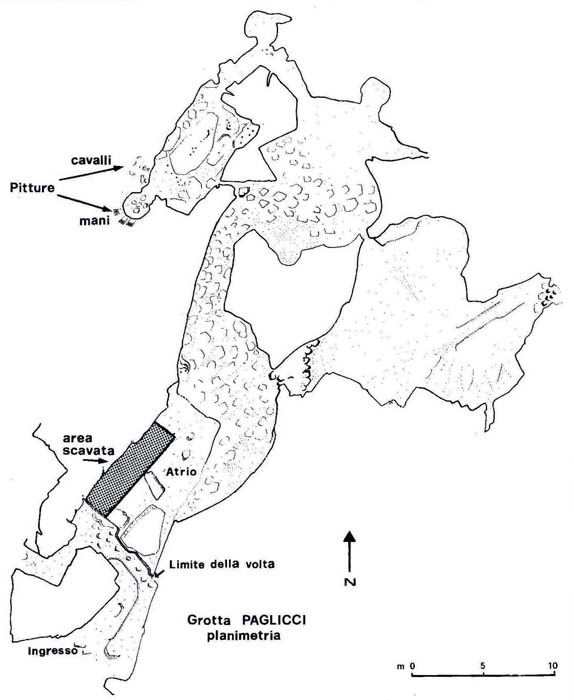
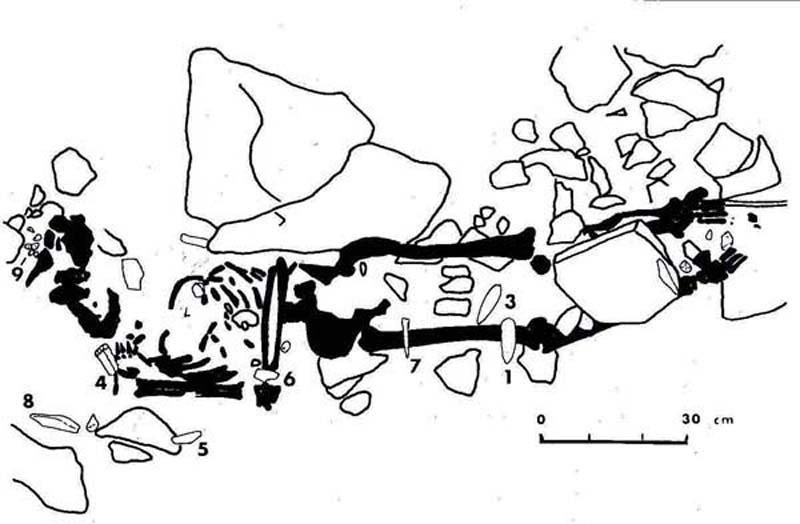
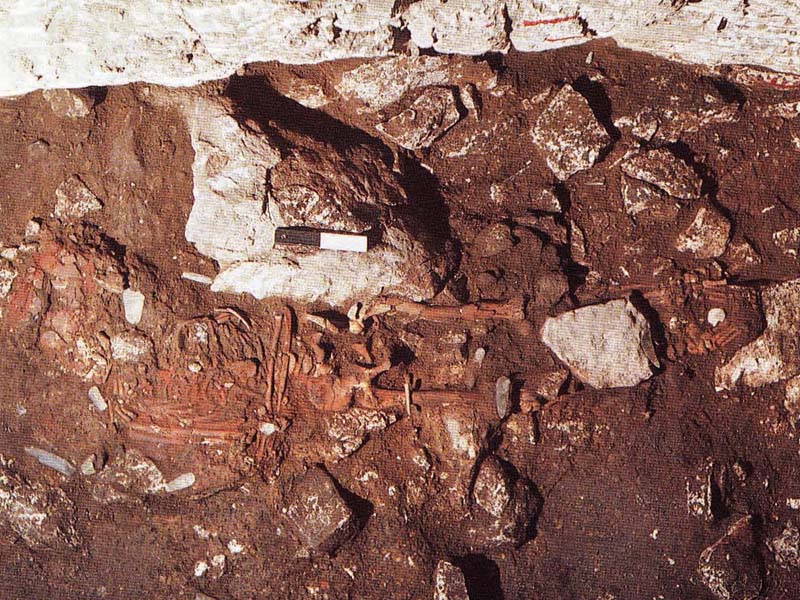
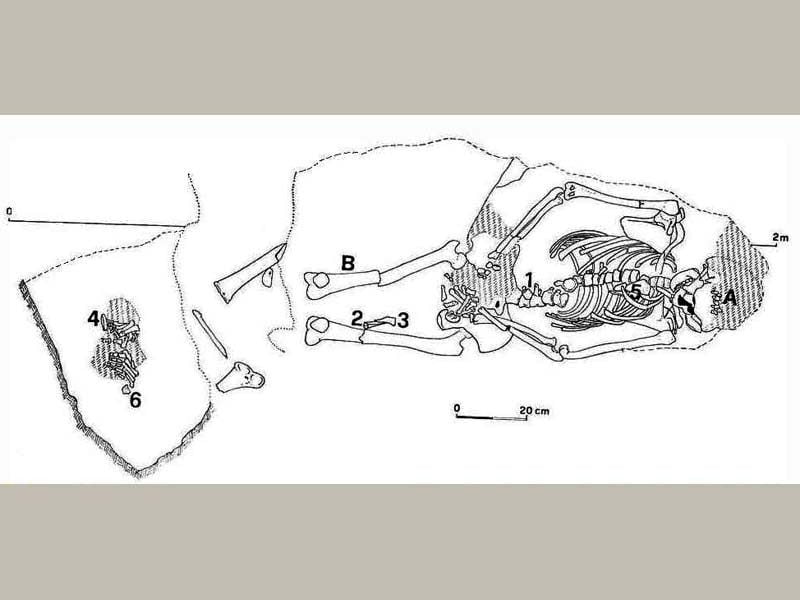

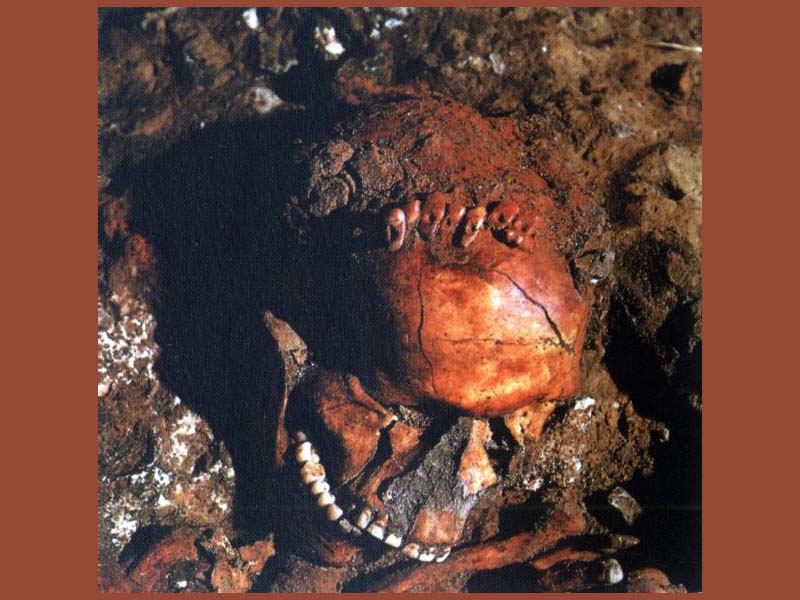
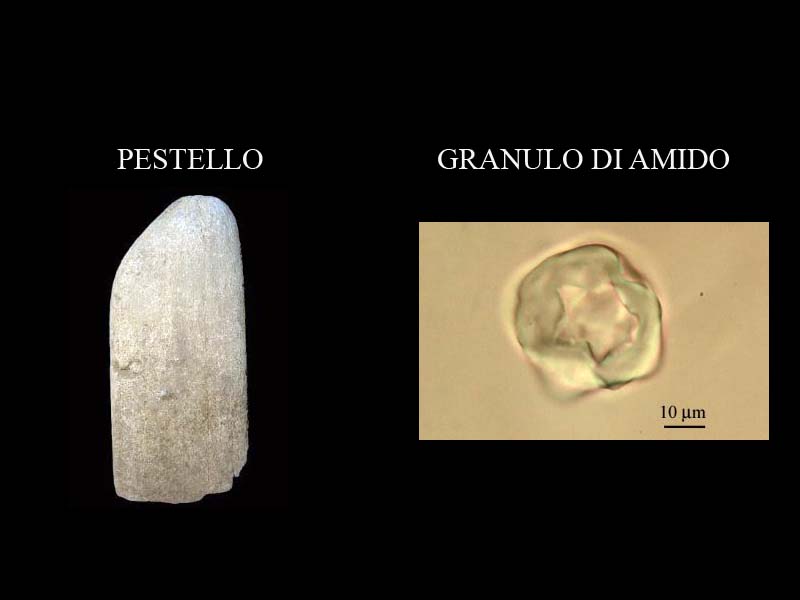
Historical notes
The first lithic remains found near the cave were discovered by chance by a group of local characters, including a geology student, attracted to the area by the mystery of the treasure hidden by the brigand Gabriele Galardi, who took refuge in the 60s in the cave during a bandit revolt, hiding inside all the loot collected in several years of robberies and extortions. The rumor of the discovery of the cave struck the well-known anthropologist and palethnologist of the University of Padua, Raffaele Battaglia who, in 1955 went to the Gargano and having ascertained the veracity of the discovery, he reported it in his turn. The news was received by Francesco Zorzi, director at the time of the Civic Museum of Natural History of Verona, who in 1960 made an inspection together with the geologist Angelo Pasa, the Prof. of the University of Florence Fiorenzo Mancini, the young student Franco Mezzena and to the well-known archaeologist Arturo Palma di Cesnòla; the following year the first excavation campaign began inside the atrium of the cave (Zorzi, Pasa and Mezzena) excavations which continued until 1963, bringing to light some human remains, art objects graffiti on bone and the painting room. In 1964 Prof. Francesco Zorzi passed away, therefore excavations were interrupted for a long time while the deposit fell prey to clandestine scavengers but above all to an avid treasure seeker, Mr. Leonardo Esposito who, convinced of the existence of the buried treasure by the brigand, he operated a slow and undisturbed demolition of the field, also making recurrent use of explosives. Excavations resumed in the spring of 1971, by the University of Siena, coordinated by the archaeologist Palma di Cesnòla, with three excavation campaigns extended to the External Shelter and the first room of the cave, excavations which continued until 2004. In the External Shelter an important stratigraphic series has been brought to light from the Lower Paleolithic (200-300.000 years ago), Middle Paleolithic (from 80 to 50.000 years ago), up to the Upper Paleolithic where the burial of the woman under ocher was found, with funeral equipment, the “Paglicci's young mother”. The Outer Shelter was originally supported by a rocky ceiling, destroyed first by cataclysms and then by the famous treasure seeker with the shooting of mines, therefore it is now completely open to the sky; for the researchers it turns out to be the most important part of the deposit, the one that supplied the most archaic finds.
CARD
LATEST PUBLISHED TEXTS
VISIT THE FACTSHEETS BY OBJECT

